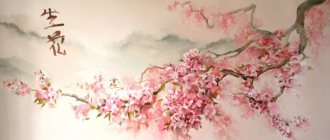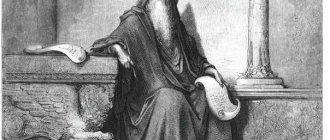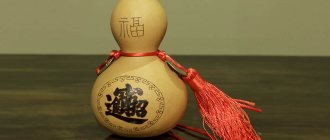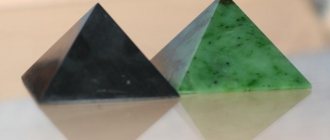The glass pyramid of the Louvre is as much a hallmark of Paris and France as the Eiffel Tower, the Seine embankment, the Champs Elysees and Versailles. Even at the construction stage, the building became the subject of heated debate and public discontent.
Supporters of the project, authored by American-born Chinese Yong Ming Pei, said that the glass building would only complement the architecture of the famous museum, bringing modernity to its appearance. Their opponents objected, emphasizing that the Art Nouveau style in which the pyramid was going to be built would spoil the aesthetic appearance of the Louvre. And this despite the fact that numerous museum buildings were erected in different historical eras, and therefore had different stylistic design.
Disputes in society, which were hotly discussed in the media, did not become an obstacle to the construction of the glass pyramid. In 1989, the building was put into operation.
Pyramids of the Louvre
Content
- "Grand Louvre"1
- Unusual entrance to the museum2 Architectural features2.1
- Internal structure2.2
30 years ago in France, in the center of Paris, at the entrance to the Louvre - the main art repository of the planet - a strange and mysterious structure appeared: a glass pyramid, which caused an ambiguous attitude among Parisians. Even before construction was completed, the glass object was fiercely debated. Some considered the pyramid, which looked ugly against the backdrop of the elegant Louvre, “a wart on a noble face,” while others defended the ambitious project. Located at the entrance to the famous art museum, the structure is surrounded by secrets, legends and speculation.
The author and his idea
The architect of the Pyramid is Ieoh Ming Pei, a graduate of the Massachusetts Institute of Technology and a master's degree from Harvard. He is also the author of many other ambitious projects: the John Hancock Tower and the John F. Kennedy Library in Boston, the Bank of China Tower in Hong Kong, and the Deutsches Museum in Berlin. His latest achievement: the Museum of Islamic Art in Doha (Qatar).
During the construction of the Louvre pyramid, a problem arose: it was not so easy to produce smooth, transparent white plates. The architect was asked to make the edges with a green tint. But then this would violate transparency, and this was not acceptable. According to Pei, the pyramid should look like a Coca-Cola bottle. And in general, he achieved his goal.
"Grand Louvre"
The Louvre was erected in the 12th century as a castle-fortress to protect the city from attacks by enemies from the lower reaches of the Seine. Under Charles V, the Louvre became a royal residence, and since 1793 - the French Revolution - the Louvre has become an art museum of the world, located on Rue de Rivoli, with an exhibition area of 60,000 square meters.
In 1981, the 21st President of France initiated the bold national project “Grand Louvre”. François Mitterrand decided to turn Paris into the cultural center of Europe by expanding and modernizing the Royal Palace to make the oldest museum, the Louvre, easy to visit.
By that time, the flow of visitors had become such that the main entrance could not cope with the influx of tourists. Then the idea arose - to reconstruct the Napoleon Courtyard, from where tourists entered the building, and to move the service premises underground.
In a competition for projects to reconstruct the entrance to the museum, the plan of the Chinese-American architect Bei Yu Ming was approved. A talented architect built a glass pyramid above the main entrance to the museum, copying the tomb of Pharaoh Cheops.
Parisians were outraged that the appearance of the city was being determined by a foreign architect. Despite this, the reconstruction of Napoleon's court was carried out by Ming Pei for 5 years, and on March 29, 1989, the pyramid, which gave the palace a touch of modernity, was opened to visitors.
Purpose of construction
In 1981, French President François Miterrand decided to make Paris the cultural center of Europe.
The main object of attention of the head of the country was the ancient Royal Palace, which, thanks to Francois Miterrand, turned into an art museum of world scale. The president launched a project called the Grand Louvre, which involved modernizing the historical palace. The pyramid was built within its framework. It was intended to complement the look and give it a touch of modernity. It also had a practical meaning - it expanded the entrance, thereby eliminating long queues. However, it was still not possible to completely get rid of the crowds of visitors. About 9 million people visit the museum every year. The flow of tourists does not dry out either on weekdays or on weekends.
Unusual entrance to the museum
The Great Glass Pyramid, the main entrance to the museum, is built of glass, aluminum and steel.
Architecture Features
The construction used 95 tons of steel, 105 aluminum chassis and 673 21 mm thick glass inserts: 603 diamond-shaped, 70 triangular. The height of the pyramid is 21.64 m, the length of the base side is 35 m, the base area is 1000 sq. m, tilt angle - 52 degrees, weight - 180 tons.
The faces are made of glass segments, so the huge underground vestibule located under the pyramid is illuminated with natural light during the day. In the underground hall there are ticket offices, a cafe and entrances to 3 wings of the museum.
To get to the museum, you need to go through the pyramid, go down a spectacular spiral staircase leading down to the vestibule (Napoleon's hall). From where escalators and elevators lift visitors to the halls of the Louvre.
Internal organization
The architect, creating the pyramid, personified the idea of connecting heaven and earth, which is what the visitor feels when seeing the heavens through the glass. The walls and floor of the room are covered with white Burgundy stone, and on the ceiling there is an elaborate mosaic in the color of the blue sky, lightly covered with clouds.
Here visitors dine in a cafe, change clothes in the wardrobe, use the Wi-Fi zone and free lockers with a code. A spacious conference room, equipped in a modern way, welcomes scientists and journalists. The underground exhibition halls introduce the history of the museum in documents and photographs. In the transparent, airy and light hall, a person feels comfortable and free.
Features of the structure
A new entrance to the Louvre was erected in the museum's courtyard. The pyramid is made of glass and metal, surrounded on different sides by smaller pyramids. The architectural complex also includes another similar structure, called La Pyramide Inversee (serves as a skylight that runs above the underground gallery in front of the Louvre). During daylight hours, three small pyramids illuminate the galleries leading to the numerous halls of the museum.
The architect managed to perfectly implement the principles of high-tech, which calls for the use of a minimum number of details with maximum functionality of each element.
Along the inner perimeter, the glass pyramid is surrounded by light bulbs, making the structure look very mysterious and mystical at night.
The technical characteristics of the pyramid are amazing:
- Built from glass blocks;
- The height of the structure reaches 21.6 m;
- The length of each side of the base of the pyramid is 35 m;
- The glass slabs that make up the structure have different shapes. 70 blocks are triangular, and 603 are huge rhombuses. This form of blocks was not chosen by chance. The building turned out to be resistant and durable to the forces of nature and underground processes. The pyramid completely repeats the shape of the famous Egyptian pyramid of Cheops;
- The blocks are completely transparent, although Pei wanted them to be foggy;
- The thickness of the glass is 2.1 cm;
- The angle of inclination of each face is 52 degrees;
- The weight of the structure is 180 tons;
- At the base of the structure lies a huge polyhedron, the area of which is one thousand square meters;
- During construction, which lasted from 1985 to 1989, 105 tons of aluminum chassis and 95 tons of steel were used.
The glass pyramid of the Louvre began its work in March 1989, receiving its first visitors.
Yong Ming Pei, in implementing his project, demonstrated not only an excellent knowledge of the functionalist style, but also a commitment to traditional Chinese culture and beliefs. On all sides, the above-ground building of the structure is surrounded by triangular pools from which fountains gush. This composition was intended not only to revive the architectural style, but also to combine the element of air (symbolized by the dome of the pyramid) with the element of water (fountains).
In addition, in order to erect a building so simple in appearance, but complex in design, the architect used the services of engineers, technologists, programmers, biologists, meteorologists, physicists, etc. So it was necessary for the glass of the pyramid to be resistant to the influence of time. In particular, it is known that this material tends to turn yellow. To prevent this from happening, special glass manufacturing technologies were used.
The underground and above-ground worlds are represented in the structure by earth and sky. They are connected to each other by a spiral staircase. Going down it, each visitor finds himself in a small cozy Napoleon hall. Already being inside, there is a desire to raise your head up to look at the sky.
The floor and walls of the interior are covered with white Burgundy stone. There is also a beautiful mosaic on the ceiling, which symbolizes the blue sky, slightly obscured by clouds. In the hall there is a cafe, a cloakroom, and a modern conference room.
Controversy
The official announcement of the project took place on January 23, 1984, at the hearing of Ieo Min Pei's case at the National Commission on Historical Monuments, from which he emerged dissatisfied with the bewilderment of the commission members. The next day the project was published under the title France Soir
: “The new Louvre is already causing a scandal.”
The photo of the pyramid published on the front page of the newspaper caused a great stir. Much of the press was critical: "Degree zero architecture" was, in the words of Pierre Vesse de Figaro
, "a call to rebellion" for Jean Dutour.
[9] []Opponents of the project, such as the art historian André Fermigier, who wrote a fierce editorial entitled "El zircón" [11], compared the pyramid to a "house of the dead", to a "funnel" or to a straight object. outside of "Disneyland" or "amusement park". [12] Many have argued that this futuristic building was built in the International Style, with some calling it a "wild card solution" outside the classical context of the Louvre. The pyramid prevents you from seeing the original building in its entirety from the Cours Napoleon
and the Arc de Triomphe des Carrousels. However, many appreciated the contrasting juxtaposition of architectural styles, the fusion of classical and modern. [7]
The project faced protests not only from conservative media, but also from parts of the right wing that brought the issue into the political arena. On this occasion, the press nicknamed François Mitterrand “ Mitteramses”
" or "
Tontonkhamon
".
[13] The Association pour le renouveau du Louvre
("Association for the Renewal of the Louvre") was created in 1984 on the initiative of former Secretary of State Michel Guy, who fought against the glass pyramid project.
[14] François Mitterrand was even accused of wanting to promote Freemasonry through these pyramids. [ 15] [ 16 ] Comparison of approximate profiles of prominent monuments of pyramidal or approximately pyramidal shape.
However, the pyramid did not intersect the perspective of the historical axis of Paris, since this axis does not begin at the Cours Carré
and in the equestrian statue of Louis XIV located at
the Cours Napoleon
.
The axis of the Louvre is actually rotated by 6.3° with respect to the axis of the Tuileries Garden and Champs-Élysées. The press, although informed, did not mention Pei's basic idea that the pyramid was inspired by the geometry of Le Nôtre gardens. [17] He fought The Nouvel Observateur
back in March 1985, writing a series of articles in support of the project of the architect Pei. [ 18 ]
The "Battle of the Pyramid" [19] was not completed until 1986, when Jacques Chirac, the mayor of Paris and prime minister, became finally convinced of the project by placing a life-size simulation of the pyramid's volume using Teflon cables. May 1, 1985 in the center of Cours Napoleon
[ 20 ] and accepting his request for an underground car park to free the banks of the Seine from tourist buses. [21]
The original design called for the statue to be mounted on a central column in the center of the pyramid. François Mitterrand wanted to leave the choice of work to Anne Pingeau (the mother of his daughter Mazarine and former curator of the museum's sculpture department), who suggested The Thinker
» Auguste Rodin.
[22] [] A test made with a plaster copy showed that from the outside the effect was perfect, but from the hall, when viewed from below, it appeared as if the Thinker
was sitting on a chamber pot;
Because of this eschatological aspect and because of bad taste, the statue was not installed. [22] [] [] The Brancusi Rooster
was also considered, but was abandoned because it was out of scale [23] and no possible replacement could be found. [ 22 ] [ ] [ ]
Pyramid in photographs
There are many images of the glass figure from different angles. A unique photo will be taken from the balcony of the Louvre, located on the second floor. But the most incredible photo is of the disappeared landmark. This masterpiece was invented and brought to life by street artist and graffiti artist JR. The edges of the figure were pasted over with a life-size image of the building. A photograph taken at the right angle displays the facade of the museum, as if in the absence of a polyhedron.
Day and night
In the daytime, the main entrance to the Louvre looks very unusual against the background of the palace. The overall picture contains notes of modernity and the grandeur of the past. The almost transparent geometric figure, surrounded by fountains, serves not only as the main entrance, but also as a means of illuminating the lobby.
In the dark, polyhedra look incredible; something mysterious appears in their outline, elusive to the human eye. This effect is created by special lighting installed around the perimeter.
How to get to the pyramid
The museum is located in the central part of the French capital, on Rivoli Street. You can get here by several means of transport:
- By metro, get to the Palais Royal Musee du Louvre station, which is the intersection of the seventh and first metro lines. Some tourists get off at Louvre Rivoli station (line 1);
- By bus: you need routes 95, 21,24, 68-69, 81 and others. The stop is located right next to the pyramid.
- On foot if tourists are close to Rivoli and the Louvre.
Address: 75001 Paris, France
Legends and interesting facts
Among particularly original people and fans of world conspiracy theories, there is an assumption that the structure is the creation of the devil himself. According to their calculations, the number of inserts is 666. Dan Brown’s famous work “The Da Vinci Code” added fuel to the fire, where the author depicted it as a ritual temple of the mysterious Illuminati. However, in official sources the number of inserts remains equal to 673.
Some interesting facts:
- It is the 3rd most popular cultural site among tourists. It is surpassed only by the legendary creation of Leonardo da Vinci “Mona Lisa” and the ancient Greek sculpture of the Venus de Milo.
- The author, Bei Yuming, wanted the building to be built in the “Coca-Cola bottle” style. Initially, he wanted the glass segments to be slightly darkened. However, this would significantly worsen the lighting of the underground hall.
- The passage to the Louvre is the beginning of the Triumphal Route - the historical axis of Paris, which has a length of 9 km. This is one of the most ambitious projects of Francois Miterrand, which was implemented at the end of the 20th century.
- In 1793, revolutionaries from the French Masonic lodge attempted to build a pyramidal structure made of glass on this site.
- It is often associated with the activities of the Freemasons, the Illuminati and even aliens. However, there is no evidence of a connection with these “organizations”.
- This is not the only entrance to the Louvre territory. You can get there without queues from Rivoli Street or directly from the metro, from the side leading to the Carousel.
- In addition to the architect himself, a team of physicists, meteorologists, technologists, biologists and programmers worked on the project.
- Bei Yuming used the principles of Feng Shui in his work. It is surrounded on 3 sides by fountains. With this layout, the architect sought to harmoniously combine the two main elements - air and water.
Popularity
The Pyramid is the third most popular art object among museum visitors after the Mona Lisa and Venus de Milo. Some still believe that modern architecture is an insult to the museum and also reduces the view of Napoleon's court. Others liked the combination of old and new. At one time, such discussions acquired a political character in France, placing the right and left on opposite sides of the barricades.
The Pyramid is one of the busiest places in Paris. Since the creation of the pyramid, the number of annual visitors to the Louvre has increased from 3 million to 10 million in 2022. There were some problems. Museum director Henri Loyrette called the services under the pyramid "very insufficient", although there are changing rooms, toilets, an information desk and ticket offices. In 2022, the ticket offices will be closed and the premises will be reorganized.
Surrounding the pyramid
The glass pyramid does not cover the facades of the palace: it is just below the Louvre, and the decor of the building is visible through the glass. The pyramid's unique glass manufacturing process guarantees transparency that is independent of the weather.
The pyramid is surrounded on all sides by triangular pools with fountains. Flowing water enlivens the stillness of the central structure. The element of water merges with the element of air, enclosed in a transparent volume.
The work of meteorologists, biologists and programmers combined antiquity and modern extravagance in a glass structure. Metal structures for fastening the glass elements of the pyramid were developed by technologists and a team of physicists.
The glass pyramid is surrounded by three 5 meter high pyramids to illuminate the underground space. Small pyramids illuminate the galleries leading to the museum halls. The lighting project was developed by American lighting designer Claude Engle, who installed halogen lamps along the perimeter of the pyramids.
Renovation projects and work
New lighting
New lighting.
To replace the 4,500 lamps that illuminate the pyramid and the facades of the palace, which have reached the end of their useful life, the Louvre decided to equip itself with a new external lighting system from 2011. According to Toshiba, which installed this new equipment, based on high-efficiency LEDs, the new lighting installations have reduced the annual energy consumption required for outdoor lighting by 73%. [ thirty ]
Project "Pyramid"
When it opened in 1989, the Louvre's reception rooms were designed to accommodate between three and five million visitors. Twenty years later, the museum welcomed nine and a half million visitors a year. This insufficient size led to longer queues, location difficulties and noise, and prompted Louvre management to launch the Pyramid
", which consisted of the reorganization of the entrances and Napoleon's vestibule under the pyramid between 2014 and 2016 [31].
Inverted pyramid
In the underground shopping hall "Carousel" under Napoleon's courtyard, the fifth pyramid of the Louvre, upside down, shows visitors the entrance to the Louvre. There is a two-level shopping center from which people go up to the museum lobby. An analogue of a glass pyramid - the edges of the panels are connected by steel crosses, consists of 84 diamond-shaped and 28 diamond-shaped glasses. The top hangs above the floor at a height of 1.4 meters.
Under the glass, inverted pyramid, a stone one, 1 meter high, was erected. The peaks almost touch. This tiny pyramid, created in 1993, is believed to be part of a larger one, underground, in which the sarcophagus of St. Mary Magdalene is hidden.
The flow of visitors to the museum does not dry out. 10 million people pass through the pyramid every year. People queue for hours to get through the mysterious structure. Meanwhile, you can get to the Louvre without a queue through 2 more entrances.
external reference
- Wikimedia Commons hosts a multimedia category on the Pyramid of the Louvre
. - Photos of the pyramid
- "Pyramid, 20 Year Case", Liberation
, April 25, 2009 - "10 things to know about the Louvre pyramid", lexpress.fr, April 8, 2009
| Control of authorities |
|
- Data: Q13397
- Multimedia: Pyramid of the Louvre
Main characteristics
It is located above the underground hall, on the territory of which there are ticket offices, information desks, a cafe and entrances to the 3 main wings of the museum. Thanks to its design, enough light penetrates into the room, allowing you to avoid the use of artificial lighting during the day. Around it there are 3 small ones that act as illumination.
Main characteristics of the object:
- Height: 21.6 m.
- Weight: about 180 t.
- Total area of the multifaceted base: 1000 sq. m.
- Length of the sides of the base: 35 m each.
- Angle of edges: 52º.
- Construction: 603 diamond-shaped and 70 triangular segments.
- Segment thickness: 0.21 cm.
- Materials used: glass, aluminum and steel.
You can get to the attraction by metro lines 1 and 7. Get off at the PalaisRoyal-MuséeduLouvre station.
History of creation
In 1981, the mayor's office of the French capital announced a competition among architects who would take part in the Grand Louvre project. A huge number of participants submitted their applications, offering their options, both in traditional and completely original and innovative styles.
The architect BeiYuming (IeohMingPei) won the competition. This talented architect of Chinese origin proposed a design for a glass building that was quite bold at that time, which was successfully implemented.
Like the construction of the Eiffel Tower, the architectural style of the future building caused discontent and a huge amount of controversy among the residents of the capital. They believed that this would only spoil the appearance of one of the most grandiose buildings of the Renaissance. The controversy surrounding it became widespread and divided the residents of Paris into right and left.
Despite numerous discontent among the townspeople, the structure was still erected. Construction began in 1985. The opening of the facility took place in the spring of 1989. It is dedicated to the 200th anniversary of the start of the Great French Revolution.
References
- ↑ a b
“Opening of the Louvre Pyramid by President François Mitterrand.” (in French) . Consultado el 22 de enero de 2022. - Perrier, Brice (4 February 2022). "1981–1989: The Secret History of the Louvre Pyramid". Le Parisien
(in French). Retrieved January 22, 2022. - ↑ Martinez, Mariela (May 16, 2022). "Ieo Min Pei, architect of the Louvre pyramid, dies". AD Magazine Mexico and Latin America
. Retrieved October 1, 2022. - Trombetta, Pierre-Jean (1987). Twenty centuries rediscovered under the Louvre pyramid
(in French). Rock. clause 9.. - Bonnal, Nicholas (2001). Mitterrand, the great initiate
(in French). Albin Michel. paragraph 69 .. - "Monument to the glory of the French Revolution of 1886" (in French) . Consultado el 23 de enero de 2022.
- ↑ a b
Patrick Ligibel, "Metamorphoses of the Louvre", issue
Au fil de l'histoire
, March 18, 2012. - ↑ Actu, Ina (23 July 2012). "20h Antenne 2 du 29 March 1989 - Inauguration of the Pyramid of the Louvre - INA Archive" (in French). Retrieved February 2, 2022.
- ↑ a b c d Once upon a time, one destiny: François Mitterrand, illness in secret
, emisión difundida por
France 2
el 15 de diciembre de 2015. - Georges Poisson, The Great History of the Louvre
. - "Haro sur la pyramid" (in French). Le Monde. September 1, 2006
- Biasini, Emil (1989). Grand Louvre
(in French). Electa Monitor. paragraph 26 .. - "Paris de François Mitterrand" (in French). Institut de François Mitterrand. November 14, 2003. Retrieved January 23, 2020.
- Mitterrand, François (1994). Grand Louvre.
History of the project (in French). Monitor. paragraph 34 .. - The Great Mysteries of Freemasonry, 2nd
(in French). . - Jump up ↑ Nouzille, Vincent (July 20, 2012). "Paris, capital of the Maconnik". Le Figaro
(in French). ISSN 0182-5852. Retrieved January 23, 2020. . - ↑ Lucien Sfez, Cahiers internationales de sociologie
, volume 106, Presses Universitaires de France, 1999, p. 138. - Dumur, Guy; Rivière, Yves-Charles (March 1985). "Architecture: Who's Afraid of the Big Bad Louvre?" — Opinion: Long live the pyramid! " Le Nouvel Observateur No. 1060
(in French). paragraphs 46-48. - Title of a 1999 documentary film by Frederic Compain.
- "Photograph of a simulated pyramid" (in French). Consultado el 24 de enero de 2022.
- Devillard, Valerie (2000). Architecture and communications.
Architectural mediations in the 1980s (in French). Pantheon-Assas University. paragraph 126 .. - ↑ A b c
Le Bailly, David (2014). La Captive de Mitterrand (in French). Stock. paragraph 138. ISBN 9782234075092. Retrieved January 24, 2022. . - ↑ a b c Pei
, Ieo Min; Biasini, Emil; Lacouture, Jean (2001). The invention of the Grand Louvre (in French). Editions of Odile Jacob. paragraph XLIX. ISBN 9782738137609. Consultado el 24 de enero de 2022. - "Dossier de press" (in French). Louvre. September 18, 2014 p. 10 . Retrieved January 24, 2022.
- ↑ a b c d
Shane , Ekaterina;
Verdet, Jean-Pierre (enero since 1989). Great Louvre.
From tower to pyramid (in French). Paris: Hater. paragraph 153. ISBN 2-218-01898-5. - Calculated from the dimensions of the side of the base and the height.
- Jullian, Rafael (2013). Unusual stories about French monuments
(in French). City edition. paragraph 37 .. - Campion-Vincent, Véronique (1992). City's legends.
Rumors today (in French). Payot. paragraph 249. - "1984: Louvre Pyramid, Illuminati Conspiracy?" (in French) . Culture of France. Retrieved January 24, 2022.
- "New light for the Louvre pyramid" (in French). Louvre Communications Department. November 17, 2011 Consultado el 24 de enero de 2020.
- “Launch of the Pyramid project. The Louvre improves its visitor experience (2014-2016)" (in French). September 18, 2014 p. 5 . Consultado el 24 de enero de 2022.
Architectural style
Built in Art Nouveau style. Bei Yuming managed to realize his idea - to use as few parts as possible, while endowing each component of his creation with maximum functionality. Thanks to the use of triangular and diamond-shaped blocks during the construction process, the structure became resistant to the passage of time and various manifestations of the environment.
The main source of inspiration for the creator of the work of art was the Egyptian pyramid of Cheops. The interior of the lobby was decorated with snow-white Burgundy stone. The ceiling was decorated with an elaborate mosaic, symbolizing the sky, slightly overcast with clouds.
The building is given a special mystery and a certain mystical appearance at night by the skillful illumination that Claude Engle worked on. Along the internal perimeter he installed halogen lamps, which were later replaced with less power-consuming metal halide lamps. This “cool lighting” gave the building a modern look.
Sources
- https://ArchitectureGuru.ru/pyramids-of-the-louvre/
- https://MirFrance.ru/steklyannaya-piramida-luvra/
- https://GoZakordon.com/europe/france/piramida-luvra
- https://tonkosti.ru/%D0%9F%D0%B8%D1%80%D0%B0%D0%BC%D0%B8%D0%B4%D0%B0_%D0%9B%D1%83%D0 %B2%D1%80%D0%B0










